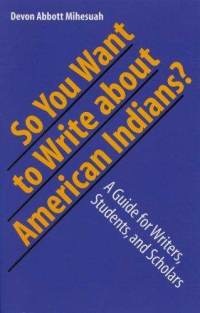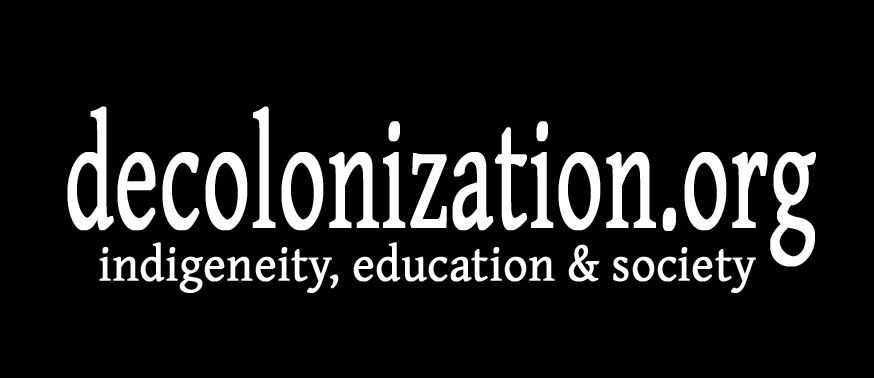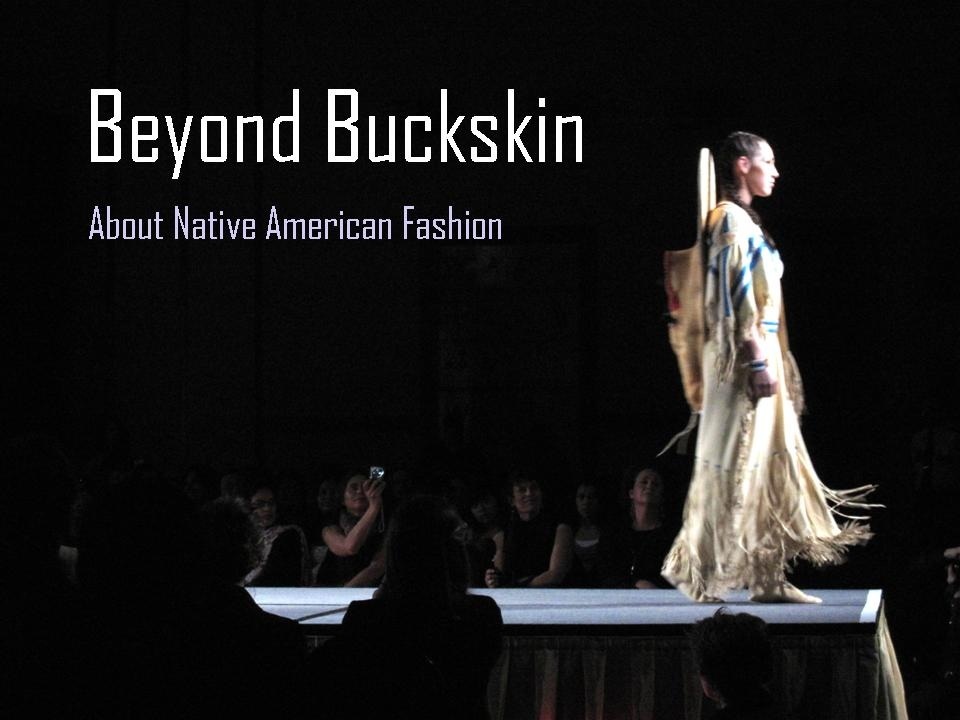|
Mihesuah, D.A. (2005). So you want to write about American Indians? : a guide for writers, students and scholars. Lincoln, University of Nebraska Press.
So You want to Write about American Indians? by Devon Abbott Mihesuah is part introduction to key concepts in Native American research, part general writing and editing guide, part suggestions for ethical guidelines to writing and research and part overview of issues that affect Native American peoples in contemporary society. Mihesuah takes on a lot in this short (158 page) book, sometimes with great achievement (in particular her second chapter discussing and debunking some common Native American stereotypes is quick witted, intelligent commentary) but in other instances she leaves the reader wanting more from her guide than just general suggestions. Mihesuah is a Choctaw scholar, writer and professor of applied Indigenous studies and history at Northern Arizona University. She is the author of a number of other books including indigenous American Women: Decolonization, Empowerment, Activism and the coeditor of Indigenizing the Academy: Transforming Scholarship and Empowering Communities, both published by the University of Nebraska Press. In this book Mihesuah identifies the “key concepts that every author writing about Natives should be aware of: stereotypes, author bias, the politics of publishing, ethics in research and writing, accountability in research and language use, ethnic fraud, and contract negotiation” (x). She also provides a basic guide for all writers or researchers that covers such topics as “getting started with a project” or “choosing a topic” or even submitting work to journals or a book publisher. Strengths The writing style is straight forward and the language and content make it accessible to a multitude of audiences. This would be an easy book to give to students, especially those who are just being introduced to writing about American Indians, or even writing in general. Mihesuah doesn’t use a lot of specialized methodological or theoretical language, instead this guide is written as a more “practical” guide. The audience of the book seems to be those who have little to no experience with the subject matter as Mihesuah spends a few chapters looking at key concepts, stereotypes and ethics in research and writing that would be “review” for most scholars or researchers. This could be both a benefit and problem with the book, as this simple “introduction” to the issues leaves little room in print for a more detailed “discussion” with the issues by Mihesuah. Another key strength of this book is that Mihesuah provides information, advice and tips that are more general in scope. This is extremely helpful to students and others who pick up the book because topics such as “getting started with a project” and “submitting your work to journals” are universal in nature and provide a way to stimulate discussion about writing in general. The appendix even includes “Creating Your Curriculum Vitae and Resume” and “Suggestions for Writing a Book Review” both practical guides for information that could benefit any student, scholar or writer. Weaknesses The sheer scope of issues prevents the book from going in depth or providing analysis on any particular topic. Instead, much of what is presented feels mostly like review (for those more familiar with the subject matter) or a basic introduction. This could be confusing to those who have very little background in writing or in American Indians. Some knowledge is taken for granted by Mihesuah, for instance she talks a little about “identity” and “blood quantum” without explaining what those things are, or how they truly affect Indigenous peoples, or even how they are still used in contemporary societies. In other cases, she makes very general or blanket statements that would require follow up by a professor or teacher. At one point she says that researchers should “get permission from the tribe” but she does not provide any guidance on how to do that or even what “permission” would look like. Use I could really see using the first two chapters as supplemental and/or introduction reading in a course. These chapters are entitled “Chapter One: Think on These Things First” and “Chapter Two: Stereotypes and Other Mistakes.” Both of these chapters offer a very basic introduction to some of the specialized issues that are a part of studying and writing about Native peoples. Chapter One includes information about the “Realities of Writing about Natives” and includes bullet points which would be wonderful jumping off or starting points for a class to discuss these issues as they pertain to readings. It also introduces students to some concepts/issues that they may not be aware of such as “identity/ ethnic fraud” or “cultural appropriation.” Additionally it offers practical advice such as “be organized” or even “learn methodologies” and yet still includes more salient issues such as “Keep in mind that your writing can affect people.” Chapter Two is particularly interesting because it presents some of the most typical stereotypes that surround Indigenous peoples. Mihesuah presents these in her same straightforward style, refutes them and then offers insight as to why they are problematic. This would be an excellent chapter to introduce some of these stereotypes to students or to a class and to have a more meaningful discussion about them, and to also teach students how to critically analyze the things they watch, read and come into contact with for these stereotypes. I am very interested in reading more of Mihesuah’s books to see the other ways in which she approaches some of these deeper issues. I believe this book can serve as a jumping/starting point for discussion but will require interaction and guidance from the professor/teacher to fully grasp the many issues presented in the book. Perhaps that is exactly the way Mihesuah intended it.
0 Comments
Your comment will be posted after it is approved.
Leave a Reply. |
SubscribeClick to
AuthorCutcha Risling Baldy is an Associate Professor and Department Chair of Native American Studies at Humboldt State University. She received her PhD in Native American Studies from the University of California, Davis. She is also a writer, mother, volunteer Executive Director for the Native Women's Collective and is currently re-watching My Name is Earl... (5) Top PostsOn telling Native people to just "get over it" or why I teach about the Walking Dead in my Native Studies classes... *Spoiler Alert!*
Hokay -- In which I lead a presentation on what happens when you Google "Native American Women" and critically analyze the images or "Hupas be like dang where'd you get that dentalium cape girl? Showing off all your money! PS: Suck it Victorias Secret"
In which we establish that there was a genocide against Native Americans, yes there was, it was genocide, yes or this is why I teach Native Studies part 3 million
5 Reasons I Wear "Indian" Jewelry or Hupas...we been bling-blingin' since Year 1
Pope Francis decides to make Father Junipero Serra a saint or In Which I Tell Pope Francis he needs to take a Native Studies class like stat
I need to read more Native blogs!A few that I read...
Archives
June 2020
Categories
All
|







 RSS Feed
RSS Feed
